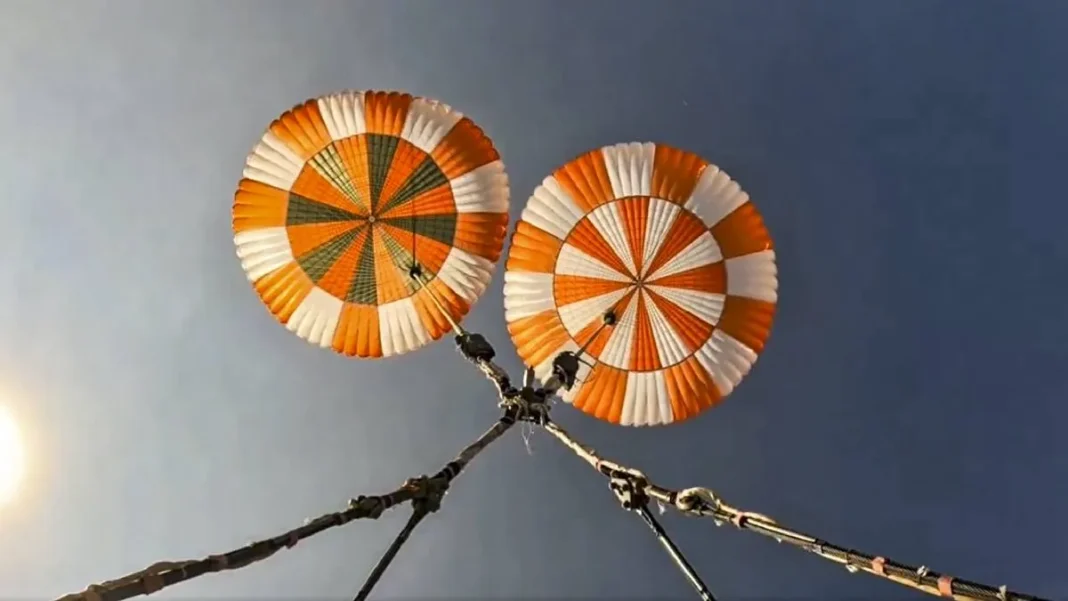ISRO Successfully Tests Gaganyaan Crew Module Parachutes in Critical Milestone
The Indian Space Research Organisation (ISRO) has successfully tested the main parachutes for its Gaganyaan crew module, validating the system under extreme conditions. This crucial test marks significant progress toward India’s first human spaceflight mission.
Key Takeaways
- ISRO successfully tested main parachutes for Gaganyaan crew module
- Test validated parachute system under extreme delay scenarios
- Mission aims to send three astronauts on three-day space journey
Test Details and Location
The Integrated Main Parachute Airdrop Test (IMAT) was conducted on November 3 at the Babina Field Firing Range in Jhansi, Uttar Pradesh. A simulated mass equivalent to the Crew Module was dropped from 2.5 km altitude using an Indian Air Force IL-76 aircraft.
Gaganyaan Mission Overview
Gaganyaan represents India’s ambitious human spaceflight program, designed to send a three-member crew on a three-day orbital mission. The comprehensive program includes developing a human-rated launch vehicle, orbital module, crew escape system, and conducting multiple unmanned test flights before the historic manned mission.
Parachute System Design
The Gaganyaan Crew Module employs a sophisticated parachute system consisting of 10 parachutes across four different types. The descent sequence involves:
- Two apex cover separation parachutes
- Two drogue parachutes for initial stabilization
- Main parachutes using reefed inflation technology
Reefed Inflation Technology
The main parachutes utilize a controlled opening process called reefed inflation. This two-stage deployment begins with partial opening (reefing) followed by full deployment (disreefing) after a predetermined time interval. The sequenced opening is managed by pyrotechnic devices that ensure smooth, controlled descent and safe landing.
Test Success and Validation
ISRO confirmed the test successfully demonstrated one of the most extreme scenarios – delayed disreefing between two main parachutes. The agency stated: “The test evaluated the system’s structural integrity and load distribution under asymmetric disreefing conditions—one of the most critical load scenarios expected during actual mission descent.”
The parachute system performed flawlessly, enabling gentle descent and safe landing of the test vehicle. This achievement involved collaboration between multiple organizations including the Vikram Sarabhai Space Centre, Aerial Delivery Research and Development Establishment, Indian Air Force, and Indian Army.




